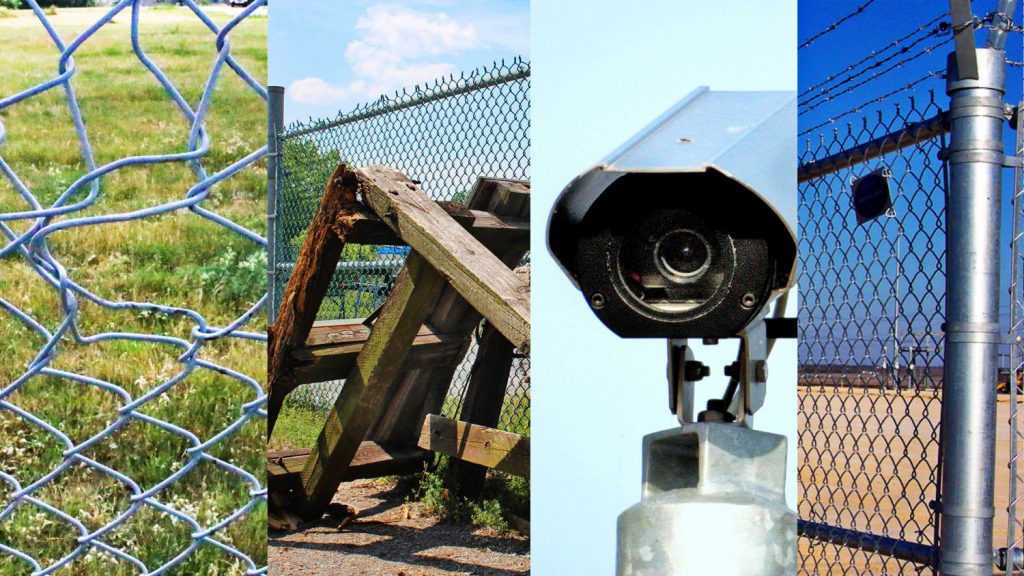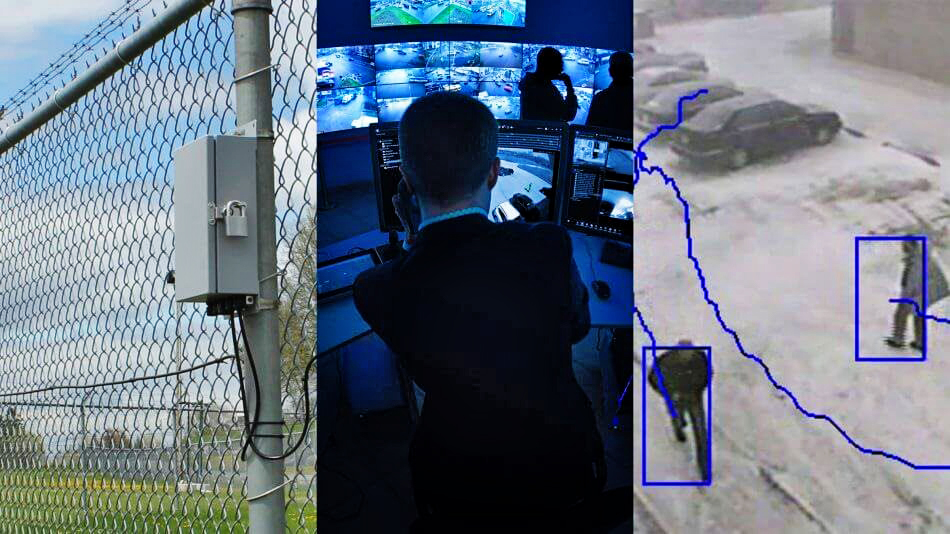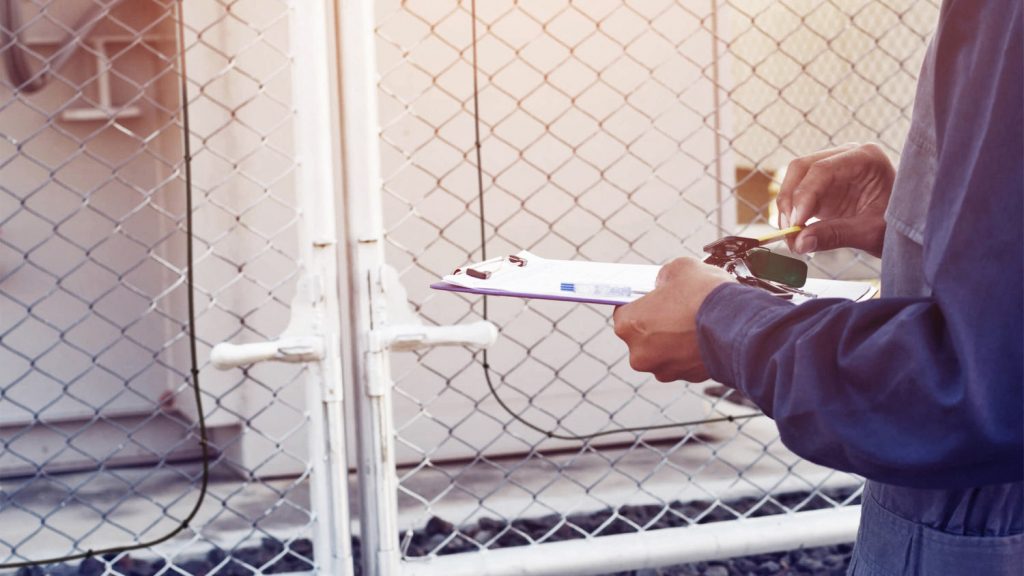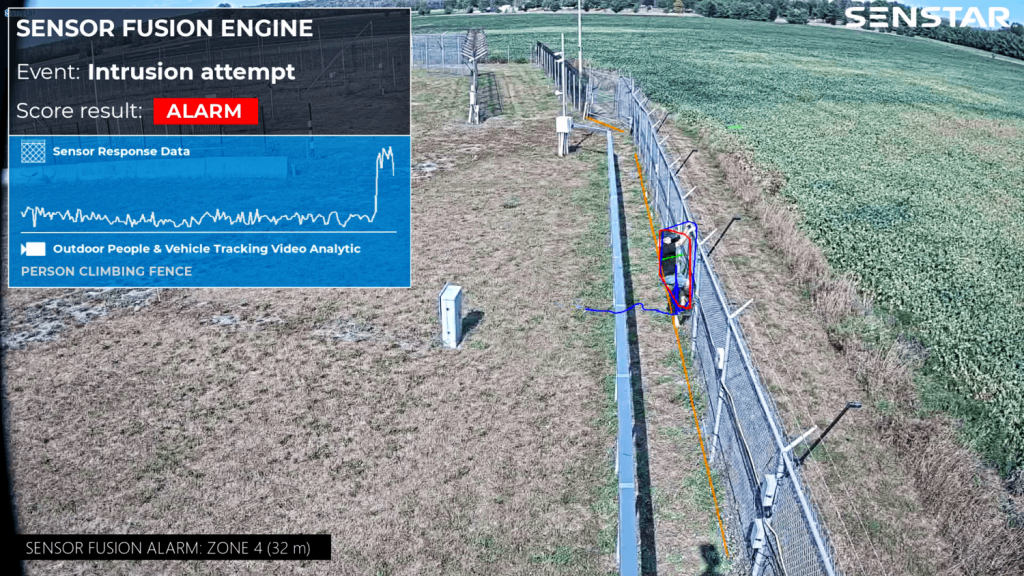
In this article, we look the common causes of nuisance alarms generated by outdoor perimeter intrusion detection sensors, with a particular focus those generated by fence sensors and intrusion-detecting video analytics. After analyzing the problem, we provide general recommendations aimed at reducing or even defeating them once and for all.
Step 1. Maintain Your Perimeter
A well-maintained perimeter is the first step in eliminating nuisance alarms. Perform a perimeter survey and identify potential security issues and risks:
- What is the condition of your fence? Loose, cut, or unsecured fabric will reduce the ability of fence sensors to detect intrusions as well as increase the number of nuisance alarms. Loose signs or vegetation striking the fence can also generate nuisance alarms, especially during high-wind conditions.
- Are there any objects (trees, structures etc.) that an intruder could use to climb over the fence?
- Is an intruder able to crawl under the fence because of gaps between the ground and the fabric?
- If cameras are used, for intrusion assessment or for additional detection capabilities, do they provide complete coverage? Are there any obstacles that block line of sight?
- Does the perimeter have suitable security lighting? Uniform, targeted illumination functions as both a deterrent and improves video surveillance-based assessment.
- If your site has outdoor equipment, network cables, or power cables along the perimeter, are they protected against vandalism or tampering?

Step 2. Work with Industry Experts
Before deciding on any specific technology, look for system integrators, consultants and vendors with proven track records. It’s easy to talk about high probabilities of detection and low nuisance alarm rate under controlled conditions. But when deployed in the real-world, security systems need to contend with a wide variety of potential nuisance alarm sources. Security professionals with experience in your particular domain can help as they should understand your requirements and can recommend idea solutions.
Another aspect to consider is the installers. Are they certified on the systems they are installed? An improperly installed system will almost certainly generate a far higher number of nuisance alarms than the technology itself should, leading to well-justified frustration on the part of facility owners and security personnel. The solution is simple: certified, trained operators, documented acceptance testing, and vendors with a culture of strong customer support.

Step 3. Select Appropriate Technology
While there are many types of sensor technologies that protect perimeters, some are niche solutions while others have a general appeal. When looking at different systems, consider these factors:
- Probability of detection – Does the system quickly, reliably and accurately detect attempts to breach the perimeter?
- Nuisance alarm rate – Does the system only generate alarms for real or simulated intrusions? If the system generates too many nuisance alarms, complacency may set in when responding to alarms.
- Ease of installation and configuration – How easy is the system to install and configure? Can the system be configured remotely from an equipment room, so maintenance staff can avoid travelling out to the perimeter whenever an adjustment is required?
- Integration with Security and Video Management Systems (SMS/VMS) – Does the system generate information for security personnel that improves situational awareness? For example:
- Can the SMS use the sensor data to display the precise location on a map?
- Are related alarms grouped together to avoid overloading officers with redundant information?
- Can the alarms be integrated with the VMS for automated camera control?

Step 4. Conduct Periodic Site Audits
An often-overlooked part of reducing nuisance alarms is periodic site audits. Over time, new site characteristics may be introduced that negatively affect the overall performance of the on-site systems. For example:
- New vegetation can grow along a perimeter, with its movement during high winds generating alarms for fence sensor and video analytic solutions.
- Fences and gates can become damaged, leading to excessive and unpredictable movement.
- Snow build-up can affect both microwave and IR sensors. Standing water caused by storms may also cause problems for some types of sensors.
- Changes to on-site structures may block camera line-of-sight requirements.
- Vehicle traffic patterns can generate activity not initially accounted for, leading to problems with many types of sensors and video analytics.

Step 5. Eliminate Common Causes
During the testing or lifespan of any system, problems may arise. For systems to remain operating at maximum performance, they need to include the features and tools necessary for operators and technicians to quickly locate and resolve issues.
For intrusion sensors, several features are critical to addressing the causes of nuisance alarms:
- Precision location reporting: If the sensor can locate the cause of a source of nuisance alarms to within a few meters or feet, the cause can be quickly resolved.
- Environmental disaggregation: The unique ability of a fence-mounted sensor with ranging (i.e. locating) capabilities to avoid the generation of nuisance alarms caused by heavy winds. Ranging sensors like Senstar’ FlexZone, can recognize these disturbances as non-intrusions not trigger an alarm.
- Sensors should include intelligence signal processing that recognizes disturbances generated by environmental forces, sudden changes in lighting, and high-activity sources (e.g. traffic, trains, etc) and reject them accordingly.

Source: Senstar Corporation





